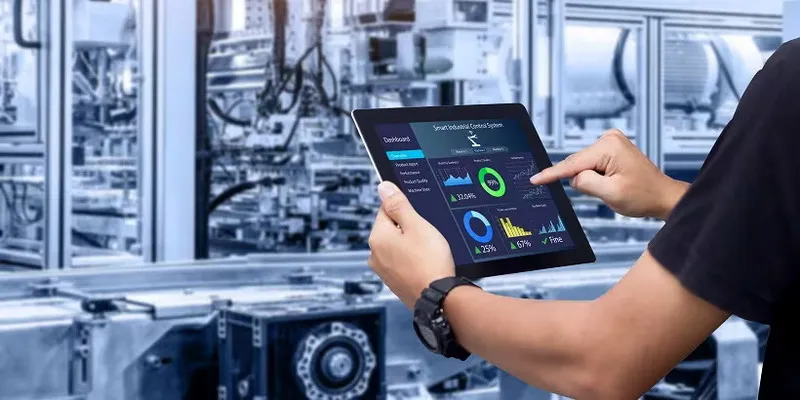Energy Efficiency Monitoring in Mechanical Databases
Last Updated on January 5, 2024 by Mutiara
In an era where sustainable practices are at the forefront of technological advancements, energy efficiency monitoring has become a pivotal aspect of various industries. One such sector that stands to benefit significantly from efficient energy consumption tracking is mechanical systems. In this blog post, we’ll delve into the realm of Energy Efficiency Monitoring in Mechanical Databases, exploring the significance of tracking energy consumption and the database solutions that play a crucial role in optimizing these systems.
Energy Consumption Tracking in Mechanical Systems
The efficient management of energy consumption in mechanical databases is paramount for both environmental sustainability and cost-effectiveness. Whether in manufacturing plants, HVAC systems, or industrial machinery, understanding and optimizing energy usage can lead to reduced operational costs and a smaller environmental footprint.
Implementing comprehensive energy consumption tracking in mechanical systems involves the integration of advanced monitoring technologies. Real-time data collection from sensors and smart devices allows for a granular analysis of energy usage patterns. This information becomes the foundation for informed decision-making and targeted improvements in energy efficiency.
Database Solutions for Energy Efficiency Monitoring
To harness the full potential of energy efficiency monitoring in mechanical systems, robust database solutions are indispensable. These databases serve as the backbone for storing, organizing, and analyzing vast amounts of data generated by monitoring systems. Here are some key features and considerations for effective energy efficiency databases
Data Aggregation and Storage
Efficient databases should seamlessly aggregate and store data from various sources, including sensors, meters, and IoT devices. This enables a comprehensive overview of energy consumption patterns over time.
Real-Time Analytics
A dynamic energy efficiency database should provide real-time analytics capabilities, allowing stakeholders to monitor energy consumption instantaneously. This facilitates quick response to anomalies and potential areas for improvement.
Scalability
As mechanical systems evolve and expand, the energy efficiency database should scale accordingly. Scalability ensures that the system can handle growing volumes of data without compromising performance.
Integration with IoT Devices
To enhance data accuracy and relevance, the energy efficiency database should seamlessly integrate with IoT devices and sensors. This integration allows for a more comprehensive and detailed understanding of energy usage patterns.
User-Friendly Interfaces
A user-friendly interface is essential for stakeholders to easily navigate and interpret the data. Dashboards and visualization tools make it simpler for users to derive actionable insights and make informed decisions.
Benefits of Energy Efficiency Monitoring in Mechanical Systems
Cost Reduction
By identifying and addressing inefficiencies, energy efficiency monitoring leads to reduced operational costs, making mechanical systems more financially sustainable.
Environmental Impact
Optimizing energy consumption contributes to a smaller carbon footprint, aligning with global sustainability goals and regulatory requirements.
Predictive Maintenance
The data collected through energy efficiency monitoring can also be leveraged for predictive maintenance, minimizing downtime and maximizing the lifespan of mechanical systems.
Energy Optimization in Industrial Databases
In the realm of industrial databases, energy optimization stands out as a key player in enhancing operational efficiency and minimizing environmental impact. The integration of advanced database solutions allows industries to not only monitor but also actively optimize energy usage. Let’s delve into the factors that make energy optimization in industrial databases a game-changer
Data-Driven Decision Making
Industrial databases equipped with energy optimization capabilities provide real-time insights into energy consumption patterns. This data empowers decision-makers to identify areas of improvement and implement targeted strategies for energy efficiency.
Predictive Analytics
Modern databases leverage predictive analytics to forecast energy usage trends. This proactive approach enables industries to anticipate fluctuations in demand, optimize resource allocation, and minimize energy waste.
Smart Grid Integration
Integrating industrial databases with smart grids allows for a seamless flow of information between energy producers and consumers. This synergy ensures that energy is distributed efficiently, preventing overloads and enhancing overall grid stability.
Dynamic Load Management
Industrial processes often experience varying levels of demand throughout the day. Energy optimization databases can dynamically manage loads, ensuring that energy-intensive tasks are executed during periods of lower demand, thereby reducing overall energy costs.
Sustainable Practices in Mechanical Engineering
The field of mechanical engineering plays a pivotal role in shaping the future of sustainable practices. As industries strive to balance economic growth with environmental responsibility, sustainable practices in mechanical engineering become crucial. Here’s a closer look at how mechanical engineering can contribute to a greener future
Material Selection and Lifecycle Analysis
Sustainable mechanical engineering involves careful consideration of material choices and their environmental impact. Conducting lifecycle analyses helps engineers understand the long-term sustainability of materials used in manufacturing processes.
Energy-Efficient Design
Engineers can promote sustainability by prioritizing energy-efficient design principles. This includes optimizing machinery and systems for minimal energy consumption without compromising performance.
Waste Reduction and Recycling
Implementing practices that reduce waste generation and encourage recycling contributes to a circular economy. Mechanical engineers can design products with disassembly and recycling in mind, minimizing the environmental impact of end-of-life disposal.
Renewable Energy Integration
The adoption of renewable energy sources, such as solar and wind power, in mechanical systems is a key sustainable practice. Engineers can design systems that harness clean energy, reducing reliance on non-renewable resources.
Real-Time Energy Monitoring in Databases
In the era of connectivity and instantaneous information, real-time energy monitoring in databases emerges as a crucial tool for industries seeking to stay ahead of the curve. The ability to monitor energy consumption in real time offers unparalleled advantages in terms of efficiency, cost savings, and sustainability. Here’s why real-time energy monitoring is gaining momentum
Instantaneous Identification of Anomalies
Real-time monitoring allows for the immediate identification of irregularities in energy consumption. This prompt detection enables quick response to issues, preventing potential disruptions in industrial processes.
Optimized Resource Allocation
With real-time data at their fingertips, decision-makers can optimize the allocation of resources, ensuring that energy is used where and when it’s needed most. This leads to cost savings and increased operational efficiency.
Compliance with Sustainability Goals
Real-time energy monitoring supports industries in meeting and exceeding sustainability goals. It provides the transparency needed to demonstrate commitment to reducing environmental impact, meeting regulatory requirements, and enhancing corporate social responsibility.
Continuous Improvement
Armed with real-time insights, industries can continuously refine their energy optimization strategies. This iterative process of improvement ensures that operations are always at the forefront of energy efficiency.
the synergy between energy optimization in industrial databases, sustainable practices in mechanical engineering, and real-time energy monitoring heralds a new era of efficiency, innovation, and environmental responsibility. By leveraging these transformative trends, industries can not only enhance their bottom line but also contribute to a more sustainable and resilient future for generations to come. As technology continues to evolve, the nexus between data and sustainability will undoubtedly shape the landscape of industrial practices worldwide.
Conclusion
the integration of energy efficiency monitoring in mechanical databases is a game-changer for industries seeking sustainability and operational excellence. With the right database solutions in place, organizations can unlock the full potential of their mechanical systems, ensuring both economic viability and environmental responsibility. Embracing these technologies not only aligns with the current focus on sustainable practices but also positions businesses at the forefront of innovation in their respective industries.








